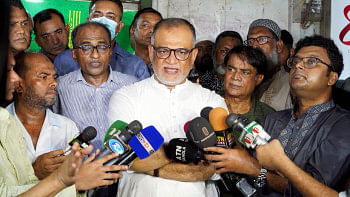South Asian Satellite to be launched May 5: Modi
Indian Prime Minister Narendra Modi today announced that the South Asian Satellite will be launched on May 5 to help address the region's economic and developmental priorities.
The Indian PM said the launch of the satellite is an "important step" by India to enhance cooperation with entire South Asia, reports our New Delhi correspondent.
Welcoming all South Asian countries who joined the South Asian Satellite, Modi said the satellite is an extension of his policy at home of "sabka saath, sabka vikaas" (with everyone and for everyone's progress).
He was addressing the nation through his monthly radio programme "Mann Ki Baat".
READ MORE: Dhaka, Delhi to sign satellite deal today
"On the 5th of May, India will launch the South Asia Satellite. The facilities and capacities of the satellite will help in addressing South Asia's economic and developmental priorities. It is important step by India to enhance co-operation with entire South Asia. I welcome all South Asian countries who joined us," the PM said.
The Souh Asian communication satellite (GSAT-9) will be launched on board Indian Space Research Organization's rocket GSLV-09 from Sriharikota space port in southern state of Andhra Pradesh. A nearly 50-metre tall rocket weighing about 412 tons will carry the South Asia Satellite.
READ ALSO: Bangabandhu satellite may be ready before time
ISRO Chairman Kiran Kumar said the satellite, with a lift-off mass of 2,195 kg, would carry 12 ku-band transponders. The satellite is designed for a mission life of more than 12 years.
The Indian PM had made the announcement about South Asian Satellite during the Saarc Summit in Kathmandu in November, 2014 calling it a "gift to India's neighbours".
ALSO READ: Brac University's nano-satellite to hit orbit in May
However, its name was altered South Asia Satellite because Pakistan did not want to be a part of it. Bangladesh, Nepal, Bhutan and Sri Lanka have agreed to join the Rs 450-crore South Asian satellite project.
According to ISRO officials, there is a potential for each participating country to use a dedicated transponder with a capacity of 36 to 54 Mhz for its own internal use.
The 2230-kg satellite has been built in three years.

 For all latest news, follow The Daily Star's Google News channel.
For all latest news, follow The Daily Star's Google News channel. 








Comments